On Thursday, January 16, we visited Julia’s farm in Florencio Varela. Julia is part of the Minka cooperative for agroecological seed production.
As part of the Citizen Science project, Julia grows and evaluates different heirloom tomato varieties — three linked to the “Rescuing the Heirloom Tomato” project (Aimé, La Piqui, and No Me Olvides) and four others from the same collection but harvested in 2023 (Perita No. 18, Perita No. 20, Perita No. 67, and Perita Ronita).
In addition, she conserves and cultivates more than 10 of her own tomato varieties, which she has collected and preserved over the years
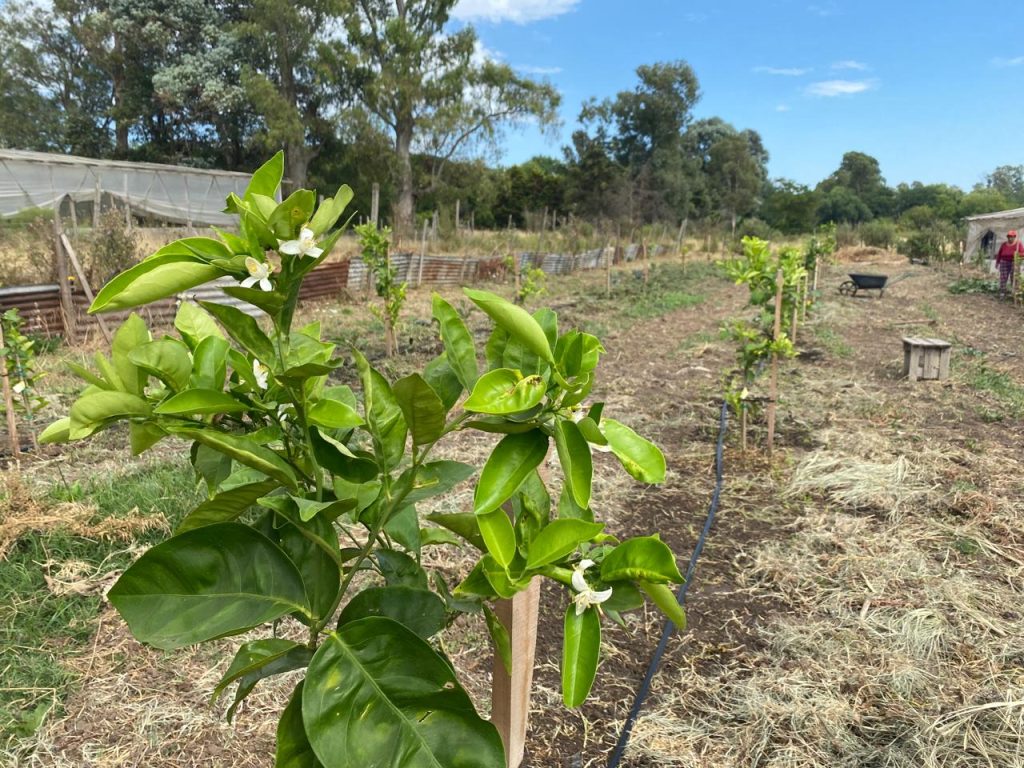
Before reaching the greenhouse where the tomatoes are, we walked through the fruit orchard. Despite the high temperatures of the past few weeks, the 30 plants are growing very well — some are even starting to flower.
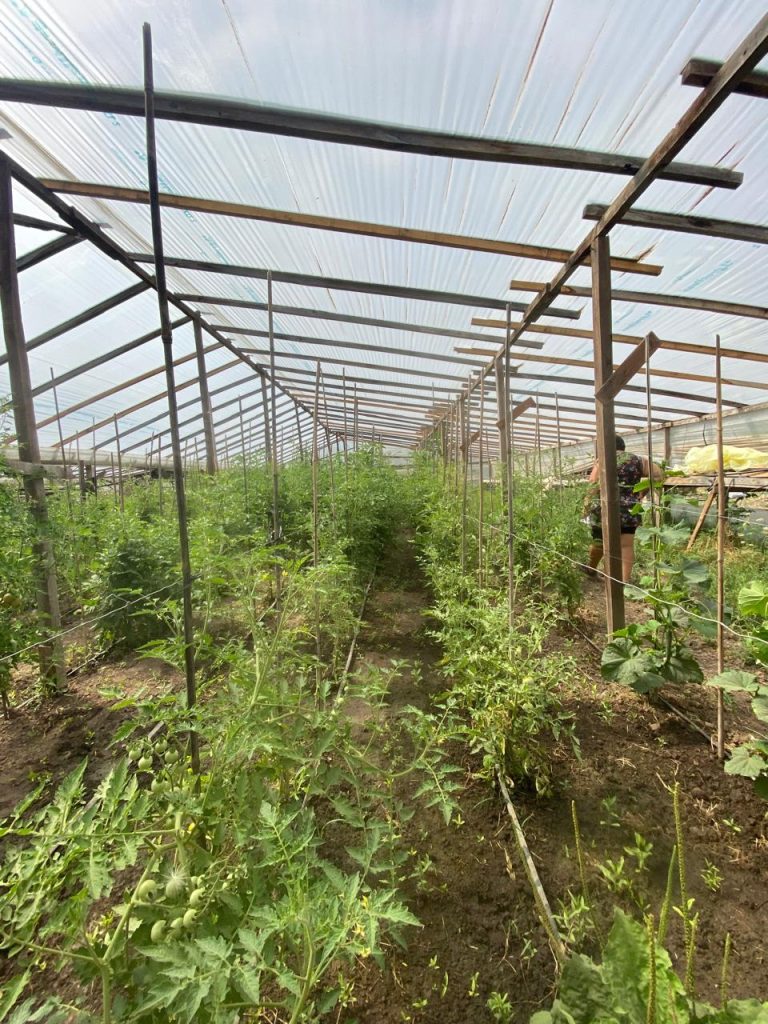
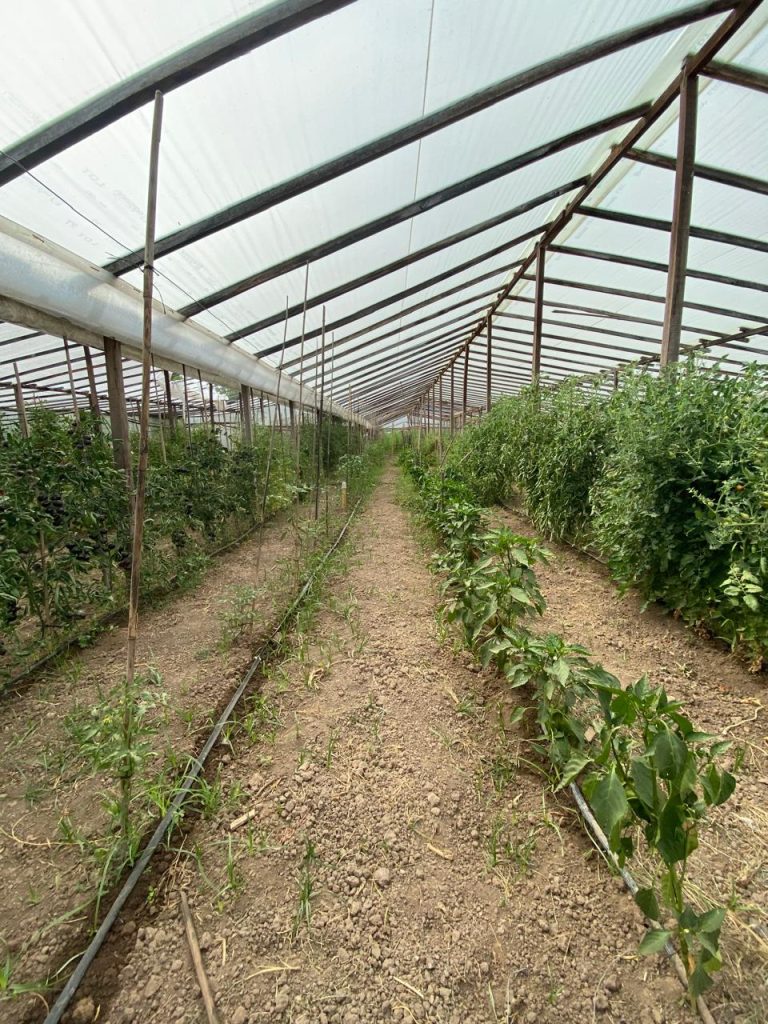
Then, we visited the recently repaired greenhouse where the tomatoes are growing. Most of the varieties are in full fruit production, and harvesting will begin this week.
We also observed the rows of peppers that were transplanted last month; most of the plants are already flowering.
Julia told us that, unlike last year, the plants are healthy, vigorous, and producing a good amount of fruit. She is hardly experiencing any issues with pests; a few green stink bugs can be seen now, but they are not causing major problems.
Some varieties, such as Perita No. 18, show signs of blossom-end rot, which is very common at this time of year due to the high transpiration rate of the plants. If you want to learn more about blossom-end rot, you can watch this video.
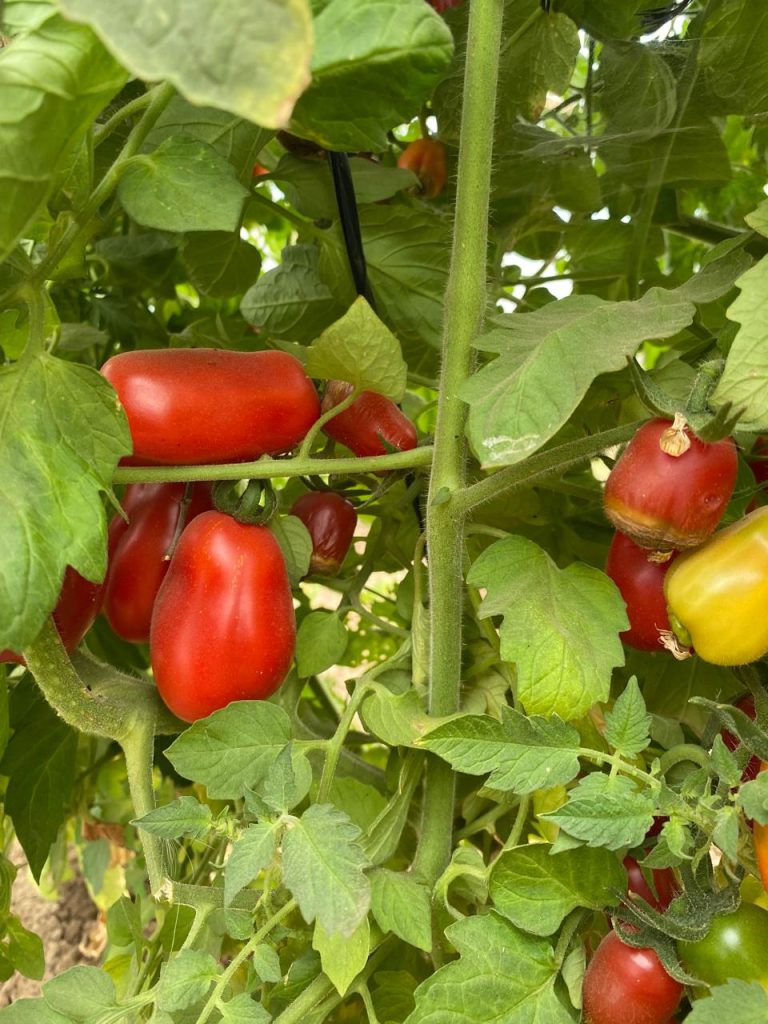
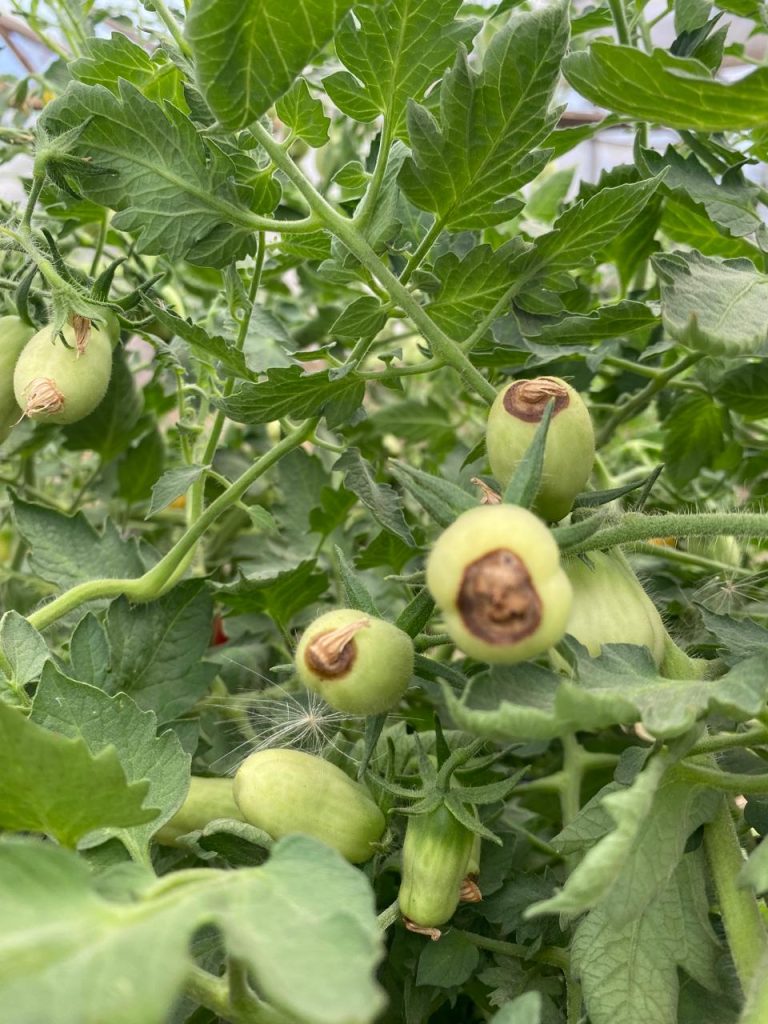
The heirloom tomato varieties from the 2023 collection are in full fruit production. Perita No. 67 especially stands out for the size and quantity of its fruits. There was no loss of plants, so the five Perita No. 18 plants, six Perita No. 20 plants, four Perita No. 67 plants, and sixteen No Me Olvides plants are all maintained.
Julia’s own tomato plants are also in full fruit production. The Red Cherry stands out for the quantity of fruits, followed by the Black Cherry, Yellow Cherry, Green Tomato, and Yellow Tomato, which have shown good productive performance this season.
On the other hand, the Pata Negra Tomato, White Cherry, Feo de Tudela Tomato, Peach Tomato, and Large White Tomato varieties have shown somewhat lower productivity.
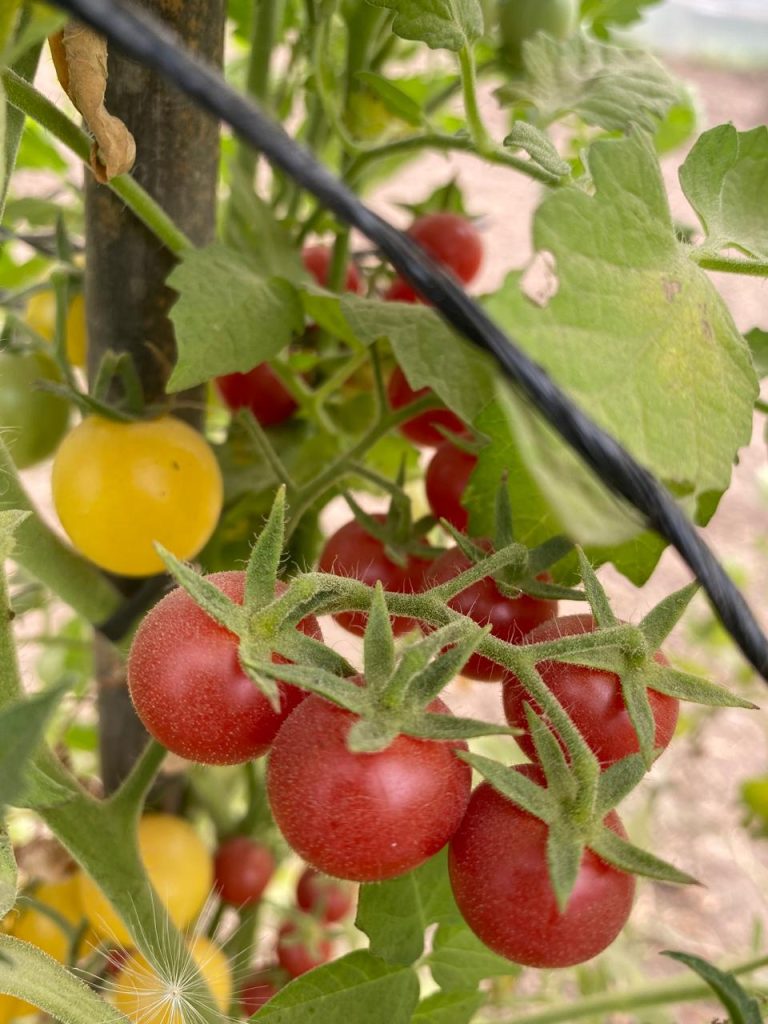
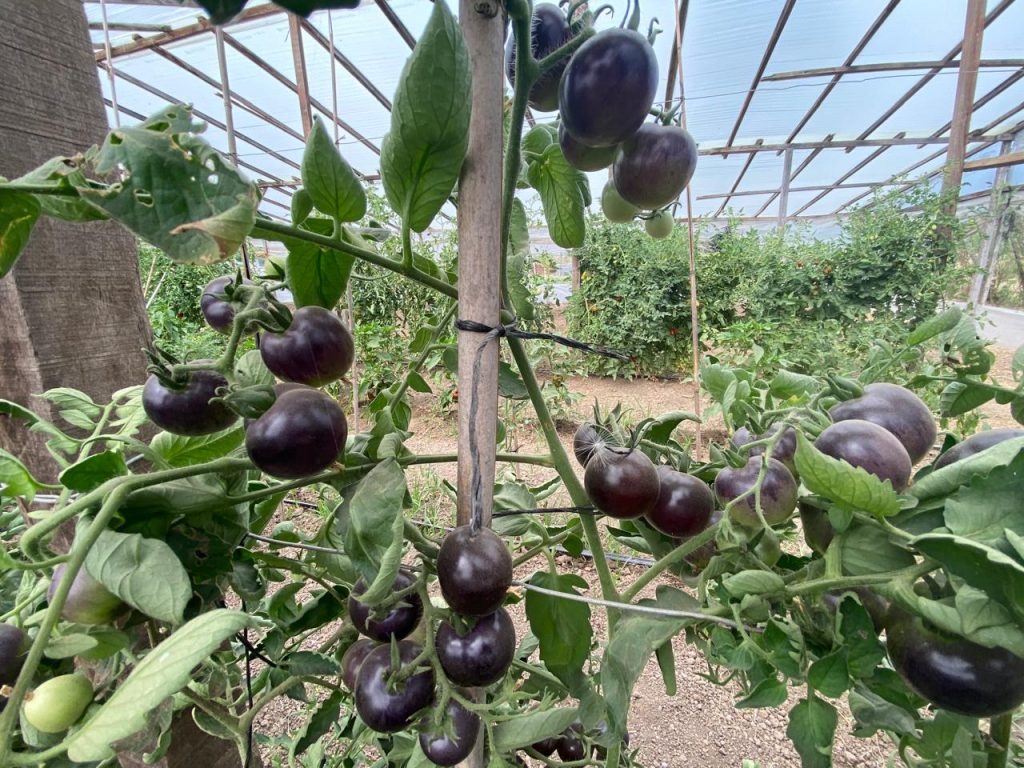
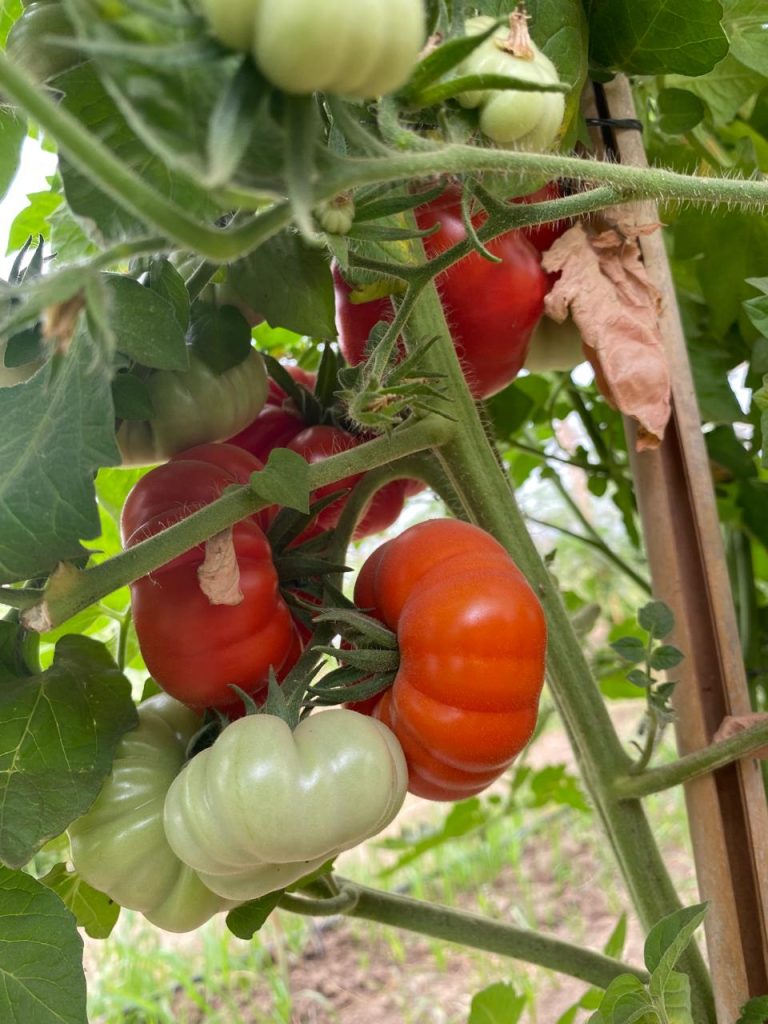
The heirloom tomatoes from the collaborative evaluation project “Rescuing the Heirloom Tomato – 2024/2025 Season” (Aimé, La Piqui, and No Me Olvides) have begun to bear fruit, but the fruits are not yet ripe. Since their sowing and transplanting were done later, their development is slightly behind compared to other varieties.
The Aimé variety (five plants) stands out, with plants loaded with ribbed fruits, followed by No Me Olvides (four plants) with large fruits.
Only one plant remains from the La Piqui variety, which has several clusters of fruits.
Finally, the Ronita variety (also evaluated by Minka in the town of Guernica) is in full fruiting, producing medium-sized, slightly angular pear-shaped fruits, although they are still not ripe.
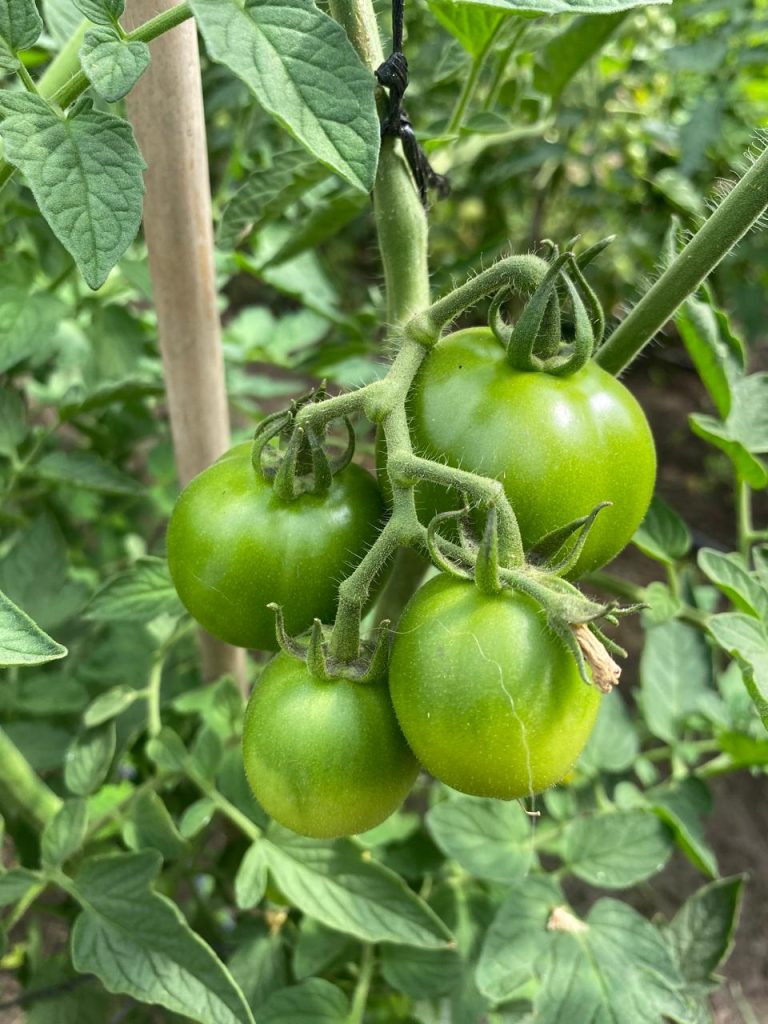
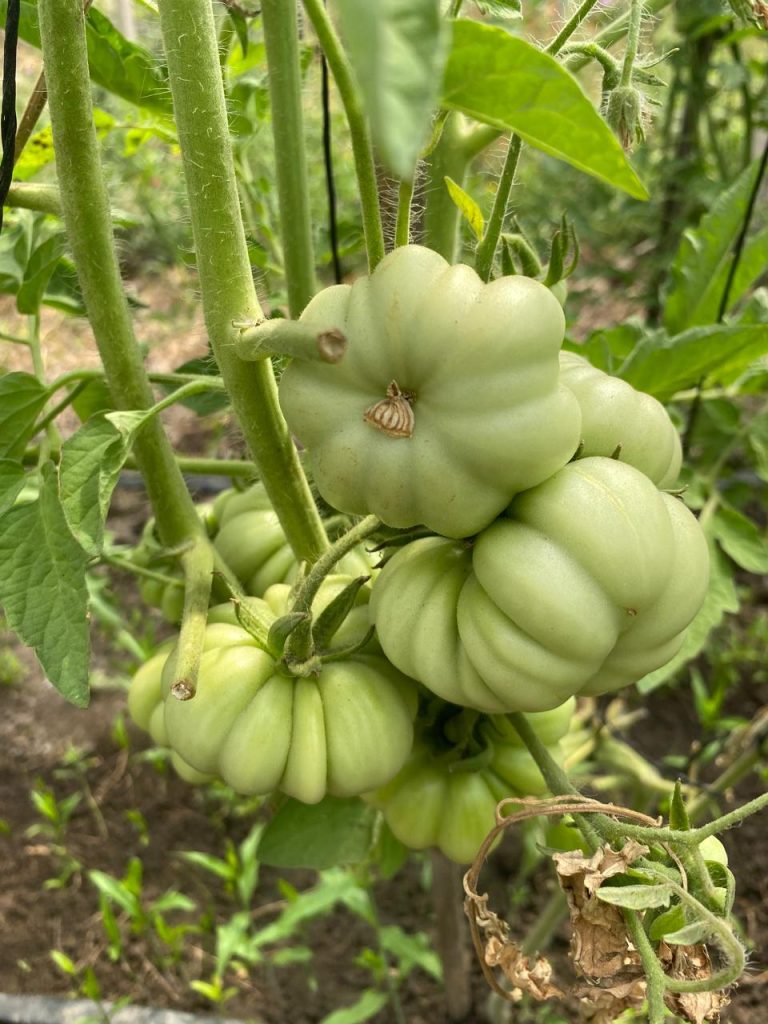
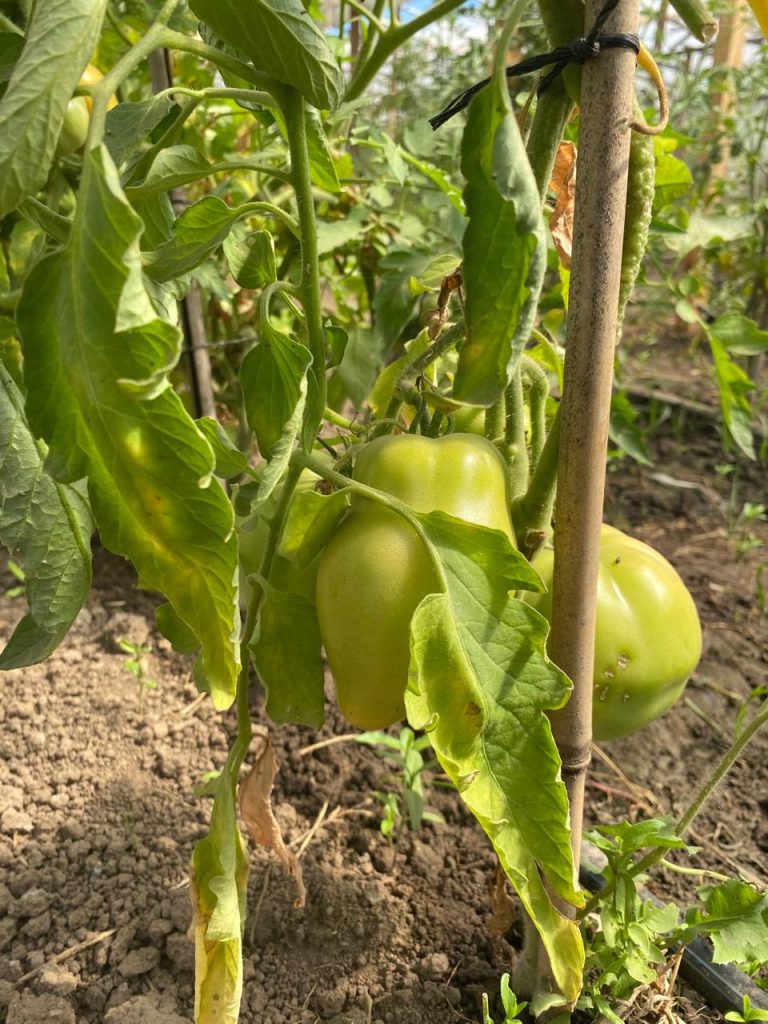
At the end of the visit, we completed the collaborative evaluation form with the data recorded so far. Julia has already started harvesting and saving seeds from some of the varieties grown this season, beginning with the Green Tomato and the Red Cherry.
If you want to learn how to harvest your own seeds, you can watch this video.
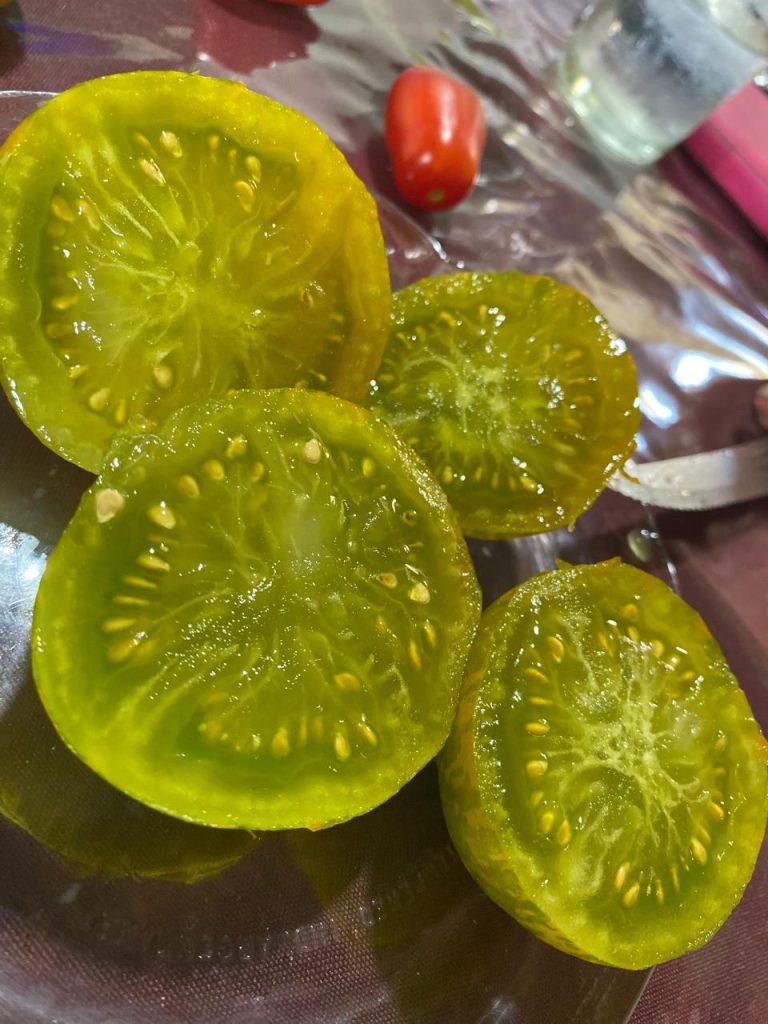
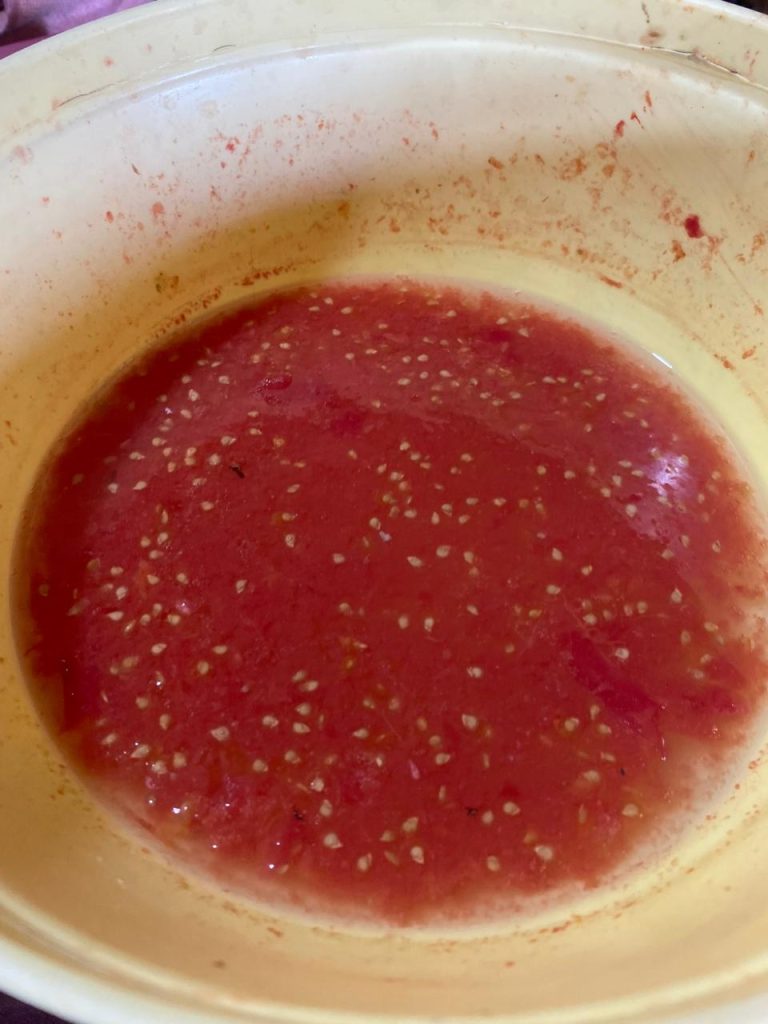
We thank Julia for her commitment, passion, and dedication to growing tomatoes. This season is going really well!
If you’re interested in participatory breeding, just like our colleagues at Minka, don’t hesitate to contact us through our social media channels.
The photos from this visit are available in this folder.